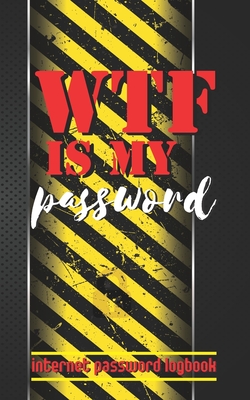Game Architecture and Design: A New Edition
Andrew Rollings, David Morris
- 出版商: New Riders
- 出版日期: 2003-11-03
- 售價: $2,890
- 貴賓價: 9.5 折 $2,746
- 語言: 英文
- 頁數: 960
- 裝訂: Paperback
- ISBN: 0735713634
- ISBN-13: 9780735713635
已絕版
買這商品的人也買了...
-
 Evaluating Software Architectures: Methods and Case Studies (Hardcover)
Evaluating Software Architectures: Methods and Case Studies (Hardcover)$2,475$2,351 -
 UML 與樣式徹底研究 (Applying UML and Patterns: An Introduction to Object-Oriented Analysis and Design and the Unified Process, 2/e)
UML 與樣式徹底研究 (Applying UML and Patterns: An Introduction to Object-Oriented Analysis and Design and the Unified Process, 2/e)$780$624 -
 Adobe Photoshop 7 創意進行式
Adobe Photoshop 7 創意進行式$580$458 -
 Visual C#.NET 程式設計經典
Visual C#.NET 程式設計經典$650$514 -
 Sun Certified Programmer & Developer for Java 2 Study Guide, 2/e
Sun Certified Programmer & Developer for Java 2 Study Guide, 2/e$1,720$1,634 -
 ASP.NET 程式設計徹底研究
ASP.NET 程式設計徹底研究$590$466 -
 軟體設計與品質管理
軟體設計與品質管理$490$387 -
 程式設計專家手冊 (The Practice of Programming)
程式設計專家手冊 (The Practice of Programming)$420$332 -
 重構─改善既有程式的設計
重構─改善既有程式的設計$720$569 -
 $399CCNA ICND Exam Certification Guide (CCNA Self-Study, 640-811, 640-801) (Hardcover)
$399CCNA ICND Exam Certification Guide (CCNA Self-Study, 640-811, 640-801) (Hardcover) -
 鳥哥的 Linux 私房菜-伺服器架設篇
鳥哥的 Linux 私房菜-伺服器架設篇$750$638 -
 鳥哥的 Linux 私房菜─基礎學習篇增訂版
鳥哥的 Linux 私房菜─基礎學習篇增訂版$560$476 -
 色彩密碼:專業設計的色彩美學 (Color Combination)
色彩密碼:專業設計的色彩美學 (Color Combination)$420$332 -
 Fedora Core 1 Linux 實務應用
Fedora Core 1 Linux 實務應用$650$553 -
 Linux 防火牆:iptables
Linux 防火牆:iptables$450$356 -
 Data Modeling 實務基礎講座
Data Modeling 實務基礎講座$390$304 -
 CCNA Self-Study: Interconnecting Cisco Network Devices (ICND) 640-811, 640-801, 2/e
CCNA Self-Study: Interconnecting Cisco Network Devices (ICND) 640-811, 640-801, 2/e$2,130$2,024 -
 Web 配色事典﹝活用網頁安全色﹞
Web 配色事典﹝活用網頁安全色﹞$390$304 -
 SCJP‧SCJD 專業認證指南 (Sun Certified Programmer & Developer for Java 2 #310-305 與310-027)
SCJP‧SCJD 專業認證指南 (Sun Certified Programmer & Developer for Java 2 #310-305 與310-027)$850$723 -
 Embedded Linux 嵌入式系統實作演練
Embedded Linux 嵌入式系統實作演練$860$731 -
 $1,078Machine Learning (IE-Paperback)
$1,078Machine Learning (IE-Paperback) -
 人月神話:軟體專案管理之道 (20 週年紀念版)(The Mythical Man-Month: Essays on Software Engineering, Anniversary Edition, 2/e)
人月神話:軟體專案管理之道 (20 週年紀念版)(The Mythical Man-Month: Essays on Software Engineering, Anniversary Edition, 2/e)$480$379 -
 Introduction to the Theory of Computation, 2/e (Hardcover)
Introduction to the Theory of Computation, 2/e (Hardcover)$1,120$1,098 -
 遊戲人工智慧 (AI for Game Developers)
遊戲人工智慧 (AI for Game Developers)$680$537 -
 名家的 CG 職人養成系 1 -POP
名家的 CG 職人養成系 1 -POP$500$395
相關主題
商品描述
Summary
Game Architecture and Design: A New Edition is a revision of the classic that you have been waiting for! This is a detailed guide to game design and planning from first concept to the start of development, including case studies of well known games. Originally published in 1999, Game Architecture and Design, has been updated by the original authors Andrew Rollings and Dave Morris. They tap back into what they teach so well and update this classic with skills and techniques found in the industry today. With more than just re-usable code, it's a comprehensive study that deals specifically with the issues of game design, team building and management, and game architecture. Through the use of real-world experiences and case studies, Andrew and Dave share it all. They show you what's worked and why as well as what to avoid and how to fix any errors. This intelligent and well-argued book is a glimpse into the often-disordered world of game development. Readers will gain solid advice and know-how that can bring some order to the often-chaotic world found in game development.
Table of Contents
Introduction.
I. GAME DESIGN.
1. First Concept.
The Shock of the New. The Creative Road Map. Having the Idea. Shaping the Idea. The Treatment. Taking Stock. Feasibility. Getting it Down.2. Core Design.
What Is a Game? Games Aren't Everything. Games Mean Gameplay. Creating the Game Spec. Example Game Spec.3. Gameplay.
What Is Gameplay? Interactivity.4. Detailed Design.
The Designer's Role. Design Documentation. Using The Design Documents. Fitting Design to Development. Why Use Documents at All?5. Game Balance.
Player/Player Balance. Player/Gameplay Balance. Gameplay/Gameplay Balance. A Game Balance Checklist.6. Look and Feel.
Ambience. Interface. Storytelling. The Sum of the Parts.7. Wrapping Up.
The Professionals.8. The Future of Game Design.
The Necessity of Design. Essentials of Game Design. The Future of Design. The Future of Games. Games as Entertainment. The Way Forward.II. TEAM BUILDING AND MANAGEMENT.
9. Current Methods of Team Management.
The Current Development Model.10. Roles and Divisions.
Assigning Personnel. Improving Morale and the Working Environment. Spreading the Risk.11. The Software Factory.
What Is a Software Factory? Why Use a Software Factory? Organizing a Software Factory. Applying the Software Factory Structure and Methodology. The Suitability of a Software Factory. Smaller Teams. The Final Word.12. Milestones and Deadlines.
How Milestones Currently Work. Fuzzy Milestones. Milestones and Mini-Milestones. When to Use Milestones. Making Your Milestones Accurate. Defining Milestones.13. Procedures and “Process”.
Procedures. “Process”. Procedures: Where to Use Them? Source Control and Code Reviews: A Synergy. The Importance of Information Transmission.14. Troubleshooting.
Risks.15. The Future of the Industry.
The State of the Industry. The New Model Developers. The Online Revolution.III. GAME ARCHITECTURE.
16. Current Development Methods.
The History of Development Techniques. The Present Day.17. Initial Design.
The Beginning. Hardware Abstraction. The Problem Domain. Thinking in Tokens.18. Use of Technology.
The State of the Art. Blue-Sky Research. Reinventing the Wheel. Use of Object Technology.19. Building Blocks.
Reusability in Software.20. Initial Architecture Design.
The Birth of an Architecture. The Tier System. Architecture Design.21. Development.
The Development Process. Code Quality. Coding Priorities. Debugging and Module Completion. The Seven Golden Gambits. The Three Lead Balloons.22. The Run-Up to Release.
Late Evaluation. Late Localization. Playtesting. Focus Groups. The Web Site. Getting Ready for the Gold Master. Patches.23. Postmortem.
Case Study 23.1A Tale of Two Projects. Team Dynamics. Concept. Development. Business Aspects. The Postmortem Postmortem.24. The Future of Game Development.
Development in Context. Future Development. Small Is Beautiful Too. Building the Team of the Future. New Directions in Development. The Shape of Things to Come?IV. APPENDIXES.
Appendix A: Sample Game Design Documents.
Detailed Design Discussions. Initial Treatments and Sample Designs. Racketeers: Gang Warfare in the Roaring Twenties. Technical Specifications. Code Review Form. Test Scripts.Appendix B: Bibliography and References.
Glossary.Index.

















